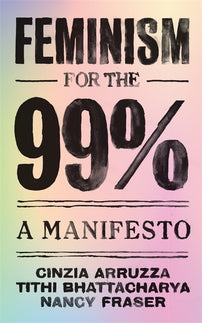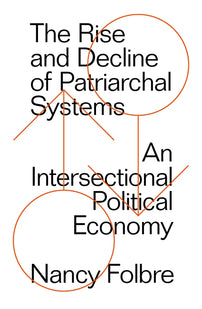Is Sexual Desire a Biological Drive?
Are we making women's interest in sex less, well, sexual?

In Tomorrow Sex Will Be Good Again, Katherine Angel weaves an argument for a future, squarely placed in the present, full of better sex. Angel explores, complicates and unravels what lies within our pleasure, autonomy, vulnerability, tenderness and fear in this "truly vital guide to navigating the difficult waters of 21st century desire," says Olivia Laing. Combining cultural critique and postmodern theory, Angel employs a full cast ranging from Freud to Audre Lorde and Beyonce to delve into the complexties of sex and desire in the age of consent.
****
The classic understanding of sexual desire is that it is a biological drive, like the drive for food or sleep. When we feel hungry or tired, we are being pushed by an unpleasant internal state to satisfy the drive, in order to return to a baseline physiological state that is no longer unpleasant (and ultimately life-threatening). But is desire best understood as a drive? Some contemporary researchers think not, and argue that, unlike hunger or thirst, it doesn’t operate on a deprivation model. It may sometimes feel like a drive – like pain or hunger, coming upon us with uncomfortable urgency – but it is not; it is arousal in a context conducive to desire.
This new understanding emerged from a range of researchers. In the contested years leading up to the revised Fifth edition of the DSM in 2013, researchers such as Cynthia Graham and Lori Brotto, who were on the committee overseeing changes to the manual, were concerned that women were being over- pathologized. For one thing, short-term changes in sexual function can be adaptive and understandable responses to stressors such as anxiety, depression, disparities in work and care, experiences of abuse and violence, difficulties of self-image and so on. For another, the linear model – from desire to arousal and orgasm – may not straightforwardly apply in women. This linear model is, effectively, the one assumed by those countless scenes of swift, efficient sex between men and women in film and TV. Desire is simply there; then follows some quick groping, the insertion of a penis, some breathless moaning, and grateful, giddy mutual orgasm.
The perception of women as suffering particularly from low desire may stem from a failure to distinguish between two different kinds of desire: spontaneous desire and responsive desire, with the latter – the desire featured on AskMen at the opening of this chapter – more common in women. The highly influential Rosemary Basson, director of the Centre for Sexual Medicine at the University of British Columbia, has put forward this view in the last two decades, on the basis of her work with patients. Spontaneous desire – the experience of a spontaneous yearning for and looking forward to sexual experiences – is less reliable for a woman, who may not be thinking ‘I want to have sex’, but may be open to it. Her desire may emerge, if the conditions are right. In this situation, a woman is experiencing first arousal, and then desire – not the other way around. This is a circular process, not a linear one. The conditions, however, are crucial; the current sexual context – the relationship, the power dynamics, the safety and trust, the reasons sex is occurring, the eroticism available, her own relationship to her body and pleasure, the presence or absence of stimuli that she finds arousing – are all critical in enabling or impeding the virtuous circle of arousal and desire.
Context is everything, and context determines whether desire feels more spontaneous or more responsive. In one context – say, that of a couple familiar with one another, in a long-term relationship – sex might not be particularly on a woman’s mind (she might be in a ‘neutral state’, as Basson puts it), but a partner’s touch, in the right conditions, can elicit a reaction of curiosity and pleasantness, even if not active or urgent desire. Eventually, desire can build. In a different context, one of novelty, infatuation, and expectation – the build-up to seeing a partner after time apart, for example, or the giddy early stages of a new relationship – desire, on reunion, can feel utterly spontaneous, as if it comes out of nowhere. But it doesn’t come out of nowhere; the desire a woman experiences in this situation is no less responsive for this feeling of urgency and spontaneity; she is simply responding to a context of excitement and anticipation – a positive feedback loop. It too is arousal in context – and the context has been priming her for pleasure. No sexual desire is purely autonomous of context; desire is rarely not responsive – it’s just that we forget to think of certain conditions as context.
Negative context is also context, and can have profound consequences. A distracting or unpleasant environment, inadequate sexual stimuli or touches, sounds and smells that are off-putting, or a stressful relationship: these can all interfere with the arousal-then-desire cycle. Many women experiencing low sexual desire may not in fact be experiencing a satisfying level of sexual arousal, and many may have never experienced an orgasm. Sex can become obligatory – a chore undertaken to keep a partner happy, who, after all, has an urgent biological drive that must be satisfied. And so a woman’s own pleasure can become less and less important, which in turn affects her desire to have sex at all, since the sex itself may not be worth having. Avoidance can set in; the vicious circle intensifies.
Acknowledging that sexual desire need not always take an urgent, spontaneous form has significant implications. If we see responsive desire as desire, we will not see as abnormal women’s ‘deviation’ from the dominant, spontaneous model largely associated with men. This is what the changes to the DSM V were designed to do, by replacing HSDD with Female Sexual Interest/Arousal Disorder (FSIAD), which allows for a sexuality in which responsiveness to initiation plays an important part. This reformulation would, it was hoped, help women access more pleasure. Lori Brotto, for example, in Better Sex Through Mindfulness, uses a therapy with patients that is inspired by Basson’s work; she encourages women to reflect on the contexts and the stimuli that are conducive to their arousal, and urges them to tune in to sensations, mindfully, without judgement, attending to the sexual arousal that emerges. This tuning in can lessen inhibition and ‘open the pathway’ to sexual desire, and, eventually, sexual satisfaction. A virtuous circle – the experience of pleasure and orgasm – can then function as a further incentive to sex. Sex that is rewarding can make women want sex again. A narrow understanding of desire as only spontaneous and urgent makes this kind of approach impossible.
Rosemary Basson was elaborating her theory of responsive desire in a period of great excitement about pharmacological treatments for sexual problems, and she was reminding everyone that there is more to sex than the biological. She was also developing her work at a time – from the turn of the millennium onwards, but particularly in the late 2000s – that had seen much consternation about a post-feminist, ‘hypersexual’ culture, and about the effects of increasingly available online pornography on male and female sexuality alike. ‘Sexualization’ is a somewhat amorphous term assuming a stark boundary between innocent childhoods and sexual adulthoods, but in this period it was invoked to criticize the infiltration of pornographic tropes into mainstream iconography and objects (t-shirts, children’s clothing ranges, pole-dancing classes at the gym). Books with titles such as Pornland and Pornified (How Pornography is Damaging our Lives, Our Relationships, Our Families) jostled for attention with official initiatives such as the American Psychological Association’s Report on the Sexualisation of Girls. These texts and debates circulated with almost as much frantic insistence as the pornography they described.
Some critiques of ‘sexualized’ culture, of compulsory sexiness and ‘raunch culture’, such as Ariel Levy’s Female Chauvinist Pigs and Natasha Walter’s Living Dolls, aired a somewhat nose-holding disapproval of the women they were ostensibly concerned about, wielding an objectifying and dehumanizing gaze on the very women whose willing self-objectification they were lamenting. Levy and Walter used terms such as ‘kitschy’, ‘slutty’, ‘bimbo’, and ‘exhibitionist’ with abandon, and without any interrogation of the misogyny pulsing under this vocabulary. ‘The dolls were on the march again’, wrote Walter. Disgust and judgement vied in these books with concern and despair.
These kinds of texts were an important atmospheric context for the sex research emerging from the start of the twenty-first century. Basson’s work argued that desire in women was no longer the linear and mechanical force Masters and Johnson had assumed, and emphasized the obstacles that all too often plagued women’s sexuality. And so her research, while it involved a welcome acknowledgement of the difficulties women experience in sex, questioned a post-feminist and insistently apolitical celebration of sex; it resisted the ever-increasing pressure on young women to be uber-sexual. Along with activist work by sexologist Leonore Tiefer, a longtime critic of the DSM, and the New View Campaign she coordinated, Basson’s work insisted that sexuality is lived in context, and that this context is not always conducive to women’s enjoyment. It acknowledged the forces that work against women’s expansive experience of their own sexuality – the sexism, the misogyny, the inequalities – and it held up a counter-image to the cultural forces urging women to be performatively, mechanically sexual; an image which allowed for a sexuality that was slow, that encountered obstacles, glitches, interruptions, and inhibitions. The women conjured in Basson’s research were not desiring machines, faithfully stepping from desire to arousal to orgasm; they were complex individuals in specific, difficult situations.
Basson’s work was implicitly asking, too, whether psychiatry and Big Pharma – Viagra and HSDD – were in cahoots with an overly sexualized culture: had Masters and Johnson, in promoting a picture of sexuality as linear and reliable, been doing the dirty work of post-feminism? Had they provided a simplified picture of sex which enabled a dubious and glib sex-positivity, one that was more wishful than grounded in reality? Representing female desire, as Basson did, as susceptible to short-circuiting – as vulnerable to the vagaries of context, as more elusive, fragile, and unpredictable than was previously imagined – may well also, then, have performed a reassuring function in an anxious climate, and formed part of an urge to slow a rampant, double-edged sexual culture down.
The model of responsive desire, and its take-up in the culture (‘women are generally responsive’), make me nervous. Why? Well, for one thing, it risks turning sexual desire into something towards which women must strive – even when they don’t want to. Being receptive to sex, even if they feel little desire, risks becoming something of a duty for women, the kind urged on women by many women’s magazines and TV shows, most iconically, Cosmopolitan, with its ‘sexercise’ tips and insistently cheery injunctions to experiment in order to keep a man’s interest. That great sex doesn’t always come naturally is a useful insight, but it is overwhelmingly women who are expected to spend time and resources on this kind of work – the work, many have argued, of heterosexual love.
That it is work is underscored by countless sex manuals. Kevin Leman, in his Christian sex manual, Sheet Music: Uncovering the Secrets of Sexual Intimacy in Marriage, writes that one might have sex ‘out of mercy, obligation, or commitment and without real desire’; yes, it may ‘feel forced’, but ‘you’re acting out of love’. In The Multi- Orgasmic Couple: Sexual Secrets Every Couple Should Know, the obligation to have sex – for the good of the relationship – is clear: readers are urged, to ‘err in the direction of sex’. And The Whole Lesbian Sex Book writes approvingly of a woman adopting a ‘no decline rule’ in a relationship; the non-desiring partner will come to want sex once things have started.
But if relationships are cemented through sex, and if low desire is to be combatted through work – through remaining receptive, being open to sex even when one doesn’t want it – how do we tell the difference between reasonable effort in a relationship and unacceptable pressure into sex? Does the emphasis on a sexual neutrality which, in the right context, can unfold into arousal and desire, undermine a person’s conviction that he or she has the right to refuse sex? Does this model give ballast to placing pressure on a partner?
The language used to advocate responsive desire is very telling. In Basson’s work, there is much emphasis on motivation, on incentives and reasons for sex. Women are primarily motivated to sex by non-sexual reasons – by ‘rewards’ or ‘gains’ that are ‘not strictly sexual’ – such as a desire for emotional closeness, or ‘intimacy needs’. Beginning from a state of being ‘sexually neutral’ is ‘not only nonpathological’, Lori Brotto writes, but is also ‘probably quite normal for couples in long-term relationships’. She wants to ‘normalise a woman’s lack of sexual desire at the beginning of a sexual encounter’. Basson, describing her ‘incentive-motivation model’, argues – in a telling turn of phrase – that a person’s ‘arousability’ is their disposition to be ‘moved towards’ sex.
That women don’t start from desire – or perhaps even have desire at all – is reflected in the language of diagnostic categories. In the fifth and current DSM, women can no longer be diagnosed with Hypoactive Sexual Desire Disorder, though men can. There is no category for women in the DSM which includes the term ‘desire’ – women are instead diagnosed with Female Sexual Interest/Arousal Disorder (FSIAD). The diagnostic criteria for FSIAD include not simply a reduction in erotic thoughts or fantasies, but a reduction in the initiation of sexual activity, as well as reduction in responsiveness to a partner’s initiations. Another of the diagnostic criteria is ‘interest in sexual activity’ (not desire). A woman, in the DSM, does not seem to have any sexual desire that is capable of being disordered. Of course, inclusion in the DSM is no marker of liberation, but in the manual, men have desire while women have incentives and motivation; men have desire disorders while women have disorders of interest and arousal. These semantic differences speak volumes: women’s investment in sex is seen as more cognitive, while men’s is more libidinal. Women consider sex, while men want it. Women’s interest in sex is less, well, sexual.





